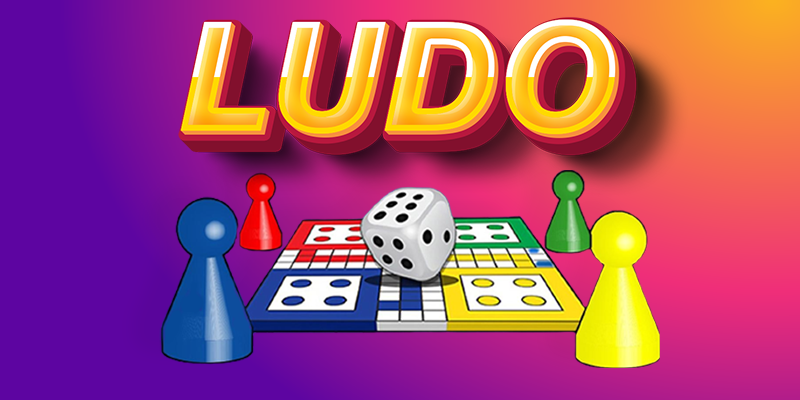What Is Ludo, and What Are the Ludo Game Rules?
Ludo is a fun, easy-to-learn board game that’s perfect for 2 -3- 4 players of all ages. Known for its simple yet exciting gameplay, Ludo has been a family favorite for decades, offering a mix of strategy, luck, and friendly rivalry. While the traditional board game has been a pastime for years, the digital version on smartphones keeps the excitement alive, allowing you to play anytime, anywhere.
Objective: Ludo Game Rules
Ludo is straightforward: the goal is to be the first player to move all your tokens from the starting base to the home area. However, it’s not just about getting there first. You must also capture your opponents’ tokens and send them back to their base, delaying their progress while advancing your own. The game is full of twists and turns, making every move exciting.
Get Started on Online Ludo
Ludo is traditionally played on a square board, typically with four colored tokens: red, blue, green, and yellow. Each player selects a color and gets four tokens. The game uses a 6-sided dice, and the objective is simple: move all your tokens from the starting base to the center (the “home” area) before your opponents.
Kite Star Ludo brings this same classic gameplay into the digital world, allowing you to enjoy the game with friends and family, no matter where they are.
How to Play Ludo Online
- Choose an Online Player: After signing up, select “Online Player” to start a new game and connect with opponents.
- Roll the Dice to Start: Players take turns rolling the dice, and the one with the highest roll goes first. Turns then proceed clockwise.
- Roll a 6 to Get Started: To bring a token onto the board, you need to roll a 6. If you don’t roll a 6, your turn is skipped. After rolling a 6, place a token on the starting square and roll the dice again.
- Moving Tokens Across the Board: With each dice roll, move one of your tokens forward by the number indicated on the dice. You can choose which token to move, depending on your strategy. Rolling a 6 gives you an extra roll, allowing you to move more tokens or advance a token further.
- Capturing Opponents’ Tokens: If your token lands on a space occupied by an opponent’s token, their token is sent back to their starting area. They will need to roll a 6 to bring it back onto the board. This adds a competitive edge to the game, requiring strategy to outmaneuver your opponents.
- Safe Zones and Special Rules: Some squares on the board are safe zones, marked with a star. Tokens in these zones are protected from being captured, so use them wisely to stay safe from opponents.
- Winning the Game: The first player to move all four tokens to their home area wins the game. Other players continue until the remaining positions are determined.
Winning Scenarios in Ludo
- Getting All Tokens to the Home Area: The best strategy is to focus on moving all four of your tokens toward the home triangle. The more tokens you have in the home area, the higher your chances of winning.
- Eliminating Opponents’ Tokens: If you land on an opponent’s token and send it back to their base, you delay their progress while gaining a bonus roll. Use this to your advantage.
- Using Safe Zones Effectively: Make the most of safe zones, which are located around each player’s area. Tokens in safe zones can’t be captured, so they offer a valuable place to protect your tokens as you move them around the board.
- Rolling Multiple 6s: Rolling multiple 6s in a row is advantageous because it allows you to move extra tokens or make additional moves. Just be careful—three consecutive rolls of 6 result in a penalty, and you lose your turn.
Losing Scenarios
Losing in Ludo generally means being the last player to get all your tokens home. However, there are specific scenarios that can contribute to a loss:
- Frequent Captures: If your tokens keep getting captured by opponents, you’ll lose valuable time and progress. Always be strategic to avoid being an easy target.
- Poor Strategy: Not using safe zones effectively or focusing too much on a single token can backfire. If that token gets captured, you’ll be left with fewer options to make progress.
- Failing to Roll a 6: If you repeatedly fail to roll a 6 early in the game, you may find yourself at a disadvantage. Without a 6, you can’t get your tokens on the board, giving your opponents a head start.
- Rolling Three 6s in a Row: Rolling three consecutive 6s results in a penalty where you lose your turn. This rule prevents players from taking excessive advantage of rolling 6s.
Common Terms Used in Ludo
- Tokens: The pieces each player moves around the board.
- Dice: A 6-sided object that determines token movement.
- Home Area: The central area where tokens must reach to win.
- Safe Zone: Squares marked with stars where tokens cannot be captured.
Equipment Used in Ludo
Traditional Ludo uses physical components, but online platforms like Kite Star Ludo digitize these elements for a seamless gaming experience:
- Digital Board: An interactive digital board with a cross-shaped play area.
- Tokens: Each player’s colored tokens.
- Virtual Dice: A digital dice roll determines token movement.
Tips and Tricks for Winning Ludo Games
- Move Multiple Tokens: Instead of focusing on one token, try to advance several tokens simultaneously to increase your chances of winning.
- Use 6s Wisely: When you roll a 6, decide whether it’s better to bring out a new token or advance an existing one. Both options have their benefits.
- Capture Strategically: Sometimes it’s more beneficial to capture an opponent’s token and delay their progress rather than advancing toward your home area.
- Plan Your Safe Zones: Always aim to land in safe zones when possible. This keeps your tokens protected and lets you continue moving without the risk of being captured.
With these strategies and tips, you’ll be ready to take on the world of online Ludo and enjoy hours of fun and competition!

